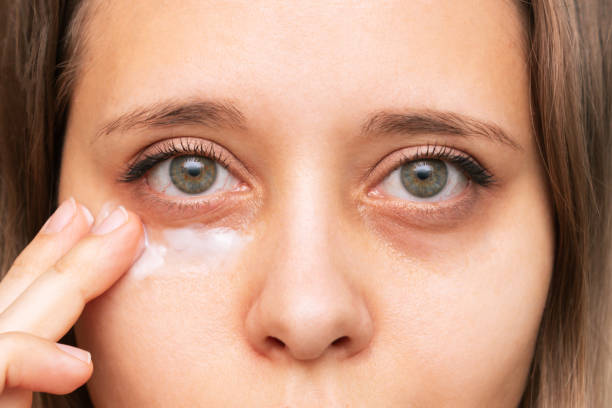Combining Salicylic Acid and Retinol: Safe Practices for Effective Skincare
In the pursuit of flawless skin, many wonder whether it’s safe to combine salicylic acid with retinol, two of the most revered ingredients in the skincare industry. At the heart of this topic lies the quest for an answer to a burning question among skincare enthusiasts: Can we mix these potent actives, and if so, how do we do it correctly? Salicylic acid, known for its blemish-fighting abilities, and retinol, celebrated as an anti-aging hero, both promise transformative results. However, their potential for causing skin irritation when used together often raises concerns. This article aims to unravel the complexities of using these ingredients in tandem, ensuring you can harness their full benefits without compromising your skin’s health.
Before diving deeper into the intricacies of skincare chemistry, let’s address the pressing question. The answer isn’t a simple yes or no; rather, it deeply depends on your skin type, tolerance, and the method of application. Herein, we’ll explore guidelines to help you navigate the convergence of salicylic acid and retinol, aiming to achieve a harmonious balance for your skincare regimen.
Getting to Know Salicylic Acid and Retinol

Salicylic acid is a beta hydroxy acid (BHA) widely used in acne treatment products. It’s known for its capacity to penetrate deep into the pores, dissolving the bond between dead skin cells, and exfoliating them away. By doing so, it helps to clear clogged pores, reduce inflammation, and promote a smoother, more even complexion. While incredibly effective for oily and acne-prone skin, salicylic acid can be drying or irritating when used in high concentrations or combined with other potent actives.
Retinol, a derivative of vitamin A, is a star in the realm of anti-aging skincare. It accelerates cell turnover, stimulates collagen production, and evens out skin tone. The long-term use of retinol has been associated with reduced fine lines, wrinkles, and improved skin texture. However, retinol can be irritating to the skin, and its strength should be considered when introducing it into a skincare routine, let alone when thinking about mixing it with other active ingredients like salicylic acid.
The Debate: Can You Mix Salicylic Acid and Retinol?

When it comes to combining salicylic acid and retinol, the beauty community is divided. On one hand, some argue that using both can lead to over-exfoliation, compromised skin barrier, and heightened sensitivity. On the other, proponents believe that with cautious use, the duo can provide unparalleled benefits in tackling both acne and signs of aging simultaneously.
Mixing these powerful ingredients can yield results greater than the sum of their parts if done correctly. However, check the following table to help you understand their individual effects on the skin before considering layering them together.
| Ingredient | Primary Benefits | Potential Side Effects |
|---|---|---|
| Salicylic Acid | Exfoliates, reduces inflammation, clears pores | Dryness, peeling, redness |
| Retinol | Stimulates collagen, reduces wrinkles, evens skin tone | Redness, irritation, increased sun sensitivity |
With the basics laid out, consulting with a skincare professional before mixing these ingredients cannot be overstated. Personalized advice is crucial due to the subjective nature of skin health and individual concerns.
The Right Way to Mix Salicylic Acid and Retinol
If you’re determined to incorporate both salicylic acid and retinol into your skincare routine, timing is critical. Applying these ingredients sequentially, rather than simultaneously, can help mitigate potential irritation. For instance, salicylic acid can be used in the morning to target pore congestion, while retinol could be reserved for nighttime use, aiding skin rejuvenation during sleep.
Below is a step-by-step guide on how to layer these ingredients effectively for those daring to tread this path:
- Initiate with a patch test for each ingredient to ensure your skin’s tolerance.
- Incorporate one product at a time into your skincare routine to monitor reactions.
- Start with salicylic acid in the AM and retinol in the PM, allowing a period for your skin to adjust.
- Consider using lower concentrations of each to minimize irritation and build up gradually as your skin becomes accustomed.
- Always follow up with a broad-spectrum sunscreen in the morning, as both ingredients can increase photosensitivity.
Note that not all skins will respond favorably when mixing these ingredients. Pay attention to signs of intolerance, such as excessive dryness, redness, or peeling. If you encounter these symptoms, discontinue use and consult a dermatologist.
Alternative Methods: Safeguarding Your Skin’s Health
For those hesitant to mix individual products containing salicylic acid and retinol, there are alternative strategies to enjoy the benefits of both without as much risk. One approach is to use formulations that contain both ingredients, as these are typically designed to deliver the actives in a more balanced and less irritating way.
Another method to minimize potential irritation is outlined in the following list:
- Use salicylic acid and retinol on alternate nights to reduce overall exposure.
- Apply a buffering layer, like a moisturizer or hyaluronic acid serum, between the application of each active.
- Decrease the frequency of use of both ingredients, starting with once or twice a week and adjust based on skin’s reaction.
By observing your skin’s response and adjusting your approach accordingly, you can better navigate the use of these powerful ingredients for optimal skin health.
Maximizing the Benefits of Salicylic Acid and Retinol
To amplify the advantages of salicylic acid and retinol without overburdening the skin, one must practice thoughtful skincare habits. Beyond the correct application methods, supporting your skin’s health with complementary products and routines plays a significant role.
It is essential to couple your use of salicylic acid and retinol with adequate hydration. A robust moisturizer can counteract the potential drying effects of these ingredients. Equally critical is the application of sunscreen during the day, as both salicylic acid and retinol render the skin more susceptible to UV damage.
The seamless integration of these ingredients into your skincare routine involves careful monitoring and adjustments based on your skin’s unique needs. Follow these tips for better outcomes:
- Patience is vital – introduce new products slowly and allow time for your skin to adapt.
- Listen to your skin – if irritation occurs, pull back on usage frequency or concentration.
- Stay consistent – regular use is key to seeing improvements over time, always within your skin’s tolerance levels.
Conclusion: The Skincare Synergy Between Salicylic Acid and Retinol
Merging the influential properties of salicylic acid with retinol could be likened to orchestrating a duet between two skincare virtuosos. The possibility of harmony exists, but only under the right conditions and with an understanding of each ingredient’s tempo and keynotes. To avoid dissonance, it’s crucial to approach the combination with mindfulness and due diligence.
Remember that individual experiences may vary, and what works for one may not suit another. Remaining in tune with your skin is of utmost importance. For those willing to experiment and who’ve done their due diligence, the results can be rewarding. Ultimately, the goal is to achieve a skincare routine that resonates with your skin’s rhythm, leading to the crescendo of a radiant, healthy complexion.
FAQs: Mixing Salicylic Acid and Retinol
Q1: How do I know if mixing salicylic acid and retinol is right for my skin type?
A1: To determine if it’s appropriate, it’s vital to understand your skin’s sensitivity and tolerance. If you have resilient skin, you may handle the combination better. However, it’s recommended to consult with a dermatologist to assess your skin’s condition and tolerance before mixing these potent ingredients.
Q2: Can using salicylic acid and retinol together cause skin damage?
A2: Mixing these ingredients can lead to over-exfoliation, irritation, and skin barrier damage if not done correctly. Therefore, it’s crucial to introduce them gradually, pay attention to how your skin reacts, and seek professional advice.
Q3: Should I apply salicylic acid and retinol at the same time?
A3: It is generally advised to separate the application of these two ingredients to minimize potential irritation. For example, you could use salicylic acid in the morning and retinol at night or apply them on alternate nights.
Q4: Can I use moisturizer when mixing salicylic acid and retinol?
A4: Yes, a moisturizer can help to buffer the effects of both ingredients and should be an integral part of your skincare routine. Apply it after the treatment products for optimal hydration and barrier protection.
Q5: How long should I wait after applying salicylic acid before applying retinol?
A5: If you choose to use both ingredients in one routine, it is recommended to wait at least 30 minutes between applications to allow the first product to absorb fully and reduce the chance of irritation. However, consult a professional for what’s best suited for your skin.


